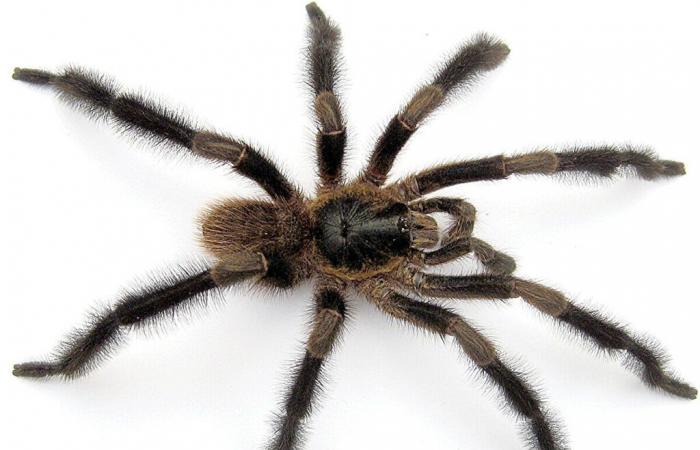A fascinating discovery enriches our knowledge of biodiversity. A new tarantula, Large Trichopelmahas in fact been identified in western Cuba. This species, described as the largest and hairiest of the genus Trichopelma, was brought to light thanks to the work of David Ortiz, of Masaryk University (Czech Republic), and Elier Fonseca, of the Cuban Zoological Society.
Tarantulas: fascinating giants of the spider world
THE tarantulasspiders of the family Theraphosidaeare among the most emblematic arachnids. Distributed mainly in tropical and subtropical regions, they are distinguished by their imposing size, their longevity and their often unexpected behaviors. Contrary to their reputation as fearsome predators, these spiders play a crucial role in their ecosystems by regulating populations of insects and other small animals.
Among the many species of tarantulas, some dig burrows, others weave webs on the ground or adopt an arboreal lifestyle. Their morphological and behavioral diversity fascinates researchers as do their unique adaptations to the varied habitats they occupy.
Within this rich spectrum of diversity, gender Trichopelma remains relatively unknown. This group of tarantulas, mainly distributed in the Caribbean and Central America, is known for its terrestrial lifestyle. Species in this genus dig trapdoor burrows, an ingenious technique that allows them to capture prey while protecting themselves from predators. Yet despite their inconspicuous habitat, members of Trichopelma often exhibit distinctive physical characteristics, such as colorful patterns or specific adaptations to their environment.
Recently, researchers identified a new species belonging to this genus called Large Trichopelma.
A hairy giant in a unique ecosystem
Identified in western Cuba, Trichopelma grande is distinguished not only by its imposing sizebut also by its unusual characteristics. Adult males have long, feathery hairs on the middle and lower parts of their legs, a feature more common among tree tarantulas. However, this species lives on the ground, in burrows camouflaged by trapdoors, a behavior typical of members of its genus.
Its abdomen sports a unique pattern: a combination of alternating dark and light spots and bands with a lighter longitudinal stripe in the center. The top of its body is lined with chestnut-brown hairs while its center, smooth and dark brown, contrasts sharply. In addition to its impressive size, the size of its head exceeds that of all other known species of the genus Trichopelma.
A restricted location in a high place of biodiversity
The discovery of this tarantula took place in the Vinales National Park. The Greater Antilles Islands, which include Cuba, are famous for their endemic biodiversity fostered by millions of years of geographic isolation. This isolation has indeed allowed species to evolve in unique ways while creating complex ecosystems where each element plays an essential role.
The researchers collected four specimens, all located in a restricted area less than twenty kilometers in radius. This limited territory, associated with the rarity of the individuals observed, raises important questions for the conservation of the species. This restricted distribution could indeed make it particularly vulnerable.
The distinctive features of Trichopelma grande were confirmed by a phylogenomic analysis that used ultraconserved element (UCE) sequencing. The DNA extracted from the specimens was compared to that of twenty-seven other genera of tarantulas in the Theraphosidae family. The results then placed this species as a close relative of Trichopelma laselvaa species native to Costa Rica.
The discovery of Large Trichopelma highlights the importance of preserve natural habitats unique like those of Cuba. Although the Viñales region is protected, global threats such as climate change and human activities could jeopardize this fragile ecosystem.






